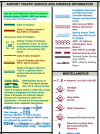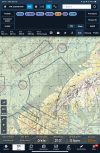Could anyone explain?
On the Sectional chart legend under, Airport traffic service and airspace information, could anyone explain which one is class G? I see 4 that are class E with only one magenta shaded that says class G underneath? How can I determine class G airspace?
On the Sectional chart legend under, Airport traffic service and airspace information, could anyone explain which one is class G? I see 4 that are class E with only one magenta shaded that says class G underneath? How can I determine class G airspace?
Last edited:



